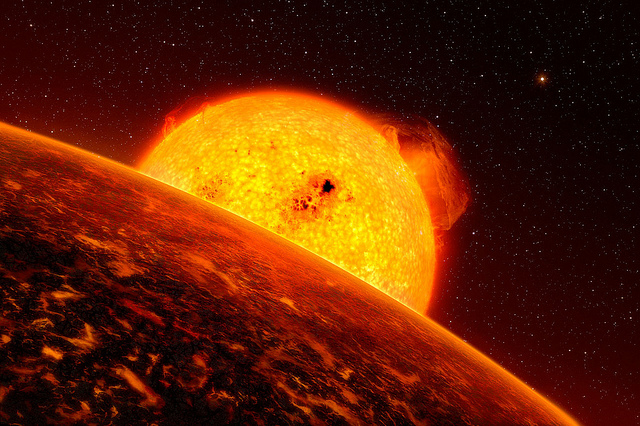This Afternoon NASA Announced the Existence of 715 New Exoplanets
In other news, my feelings of irrelevancy in the face of the vast universe have increased by 715%.

In what io9 is describing as the “single largest windfall of new confirmations at any one time,” Kepler scientists announced at a teleconference today that they have confirmed the existence of a whopping 715 new exoplanets, but hey, no big deal, all in a day’s work.
Prior to today’s announcement, the known number of planets was only 1,ooo—meaning that in a single teleconference the amount of known planets increased by 715% . Impressively, Kepler scientists Douglas Hudgins, Jack Lissauer, Jason Rowe and Sara Seager managed to keep their cool about this rapid change in our space knowledge.
The planets were confirmed using “validation by multiplicity,” a new technique only effective in single-star universes, that allows scientists to confirm that a planet discovered by Kepler isn’t just a fluke or a data error.
Lissauer explains that validation by multiplicity provided the “additional crucial evidence” necessary to confirm the existence of 715 new planets orbiting 305 stars. Again, that’s just from analyzing Kepler’s first few years of findings—imagine what validation by multiplicity might reveal from the two remaining years of Kepler data left to examine.
i09 summarizes how the team’s announcement today drastically increased our knowledge of space.
The new figure boosts the number of known small Earth-sized planets by a factor of 400%. Other jumps include a 600% increase is known Super-Earths (or Mini-Neptunes), 200% for Neptune-sized planets, and just 2% for Jupiter-sized planets.
The scientists also confirmed that four of these planets orbit inside their solar system’s zone of habitation—Kepler-174d, Kepler-296f, Kepler-298d and Kepler-309c (not that those names mean much of anything to non-rocket scientists.)
Although the fact that only four out of 715 planets exist inside a habitable zone might make the chances of extraterrestrial life seem less likely, Seager pointed out that the movement of planets can make it difficult to fully detect which ones could be habitable. “There’s plenty of room for solar systems like ours to exist,” he promised.
You done good, NASA. You done good.
(via io9, images via European Southern Observatory)
- Kepler data shows 17 Billion Earth-size planets in the Milky Way
- NASA now taking proposals for what to do with their new telescope
- Oh, NASA, always so resourceful
Have a tip we should know? tips@themarysue.com